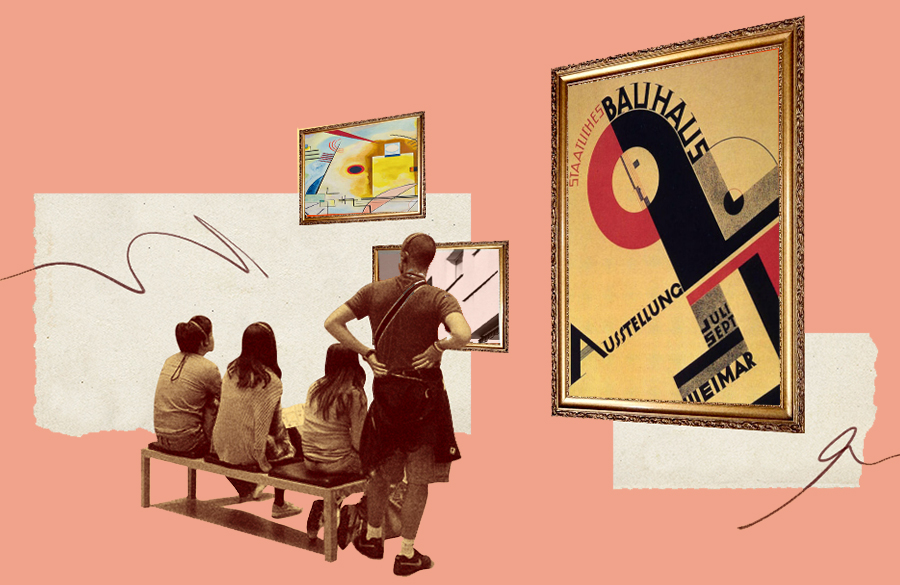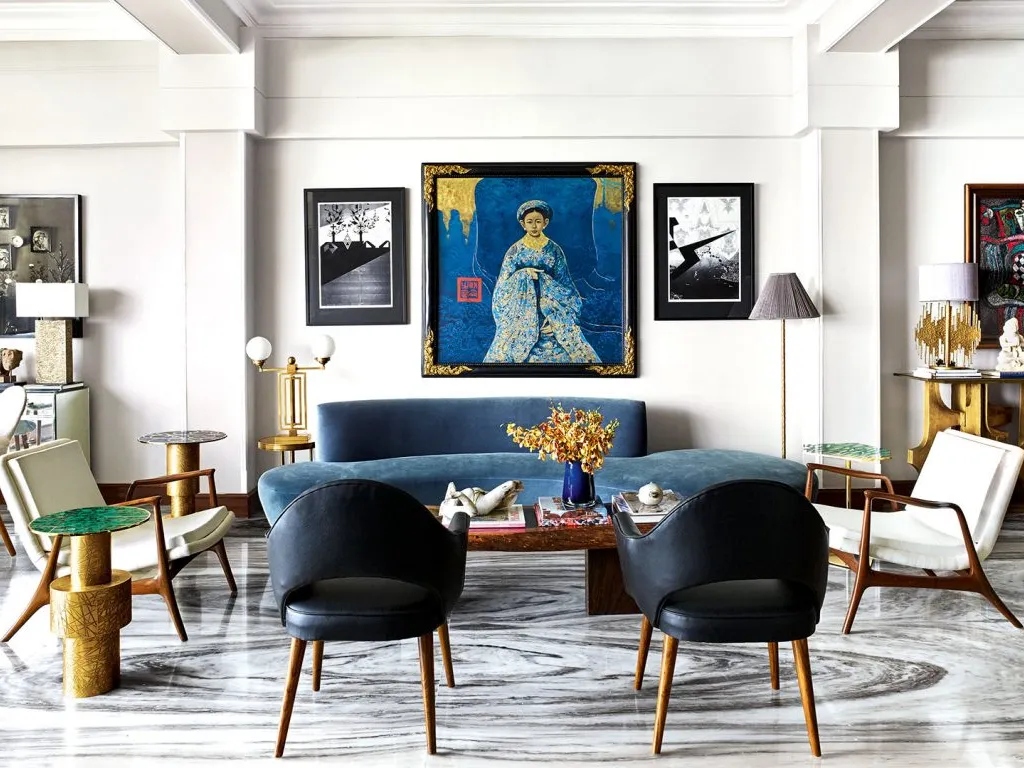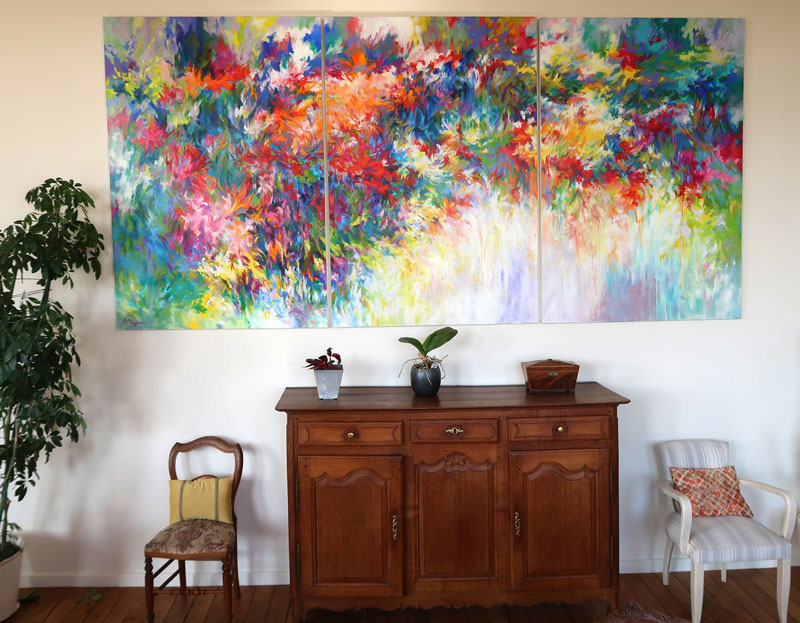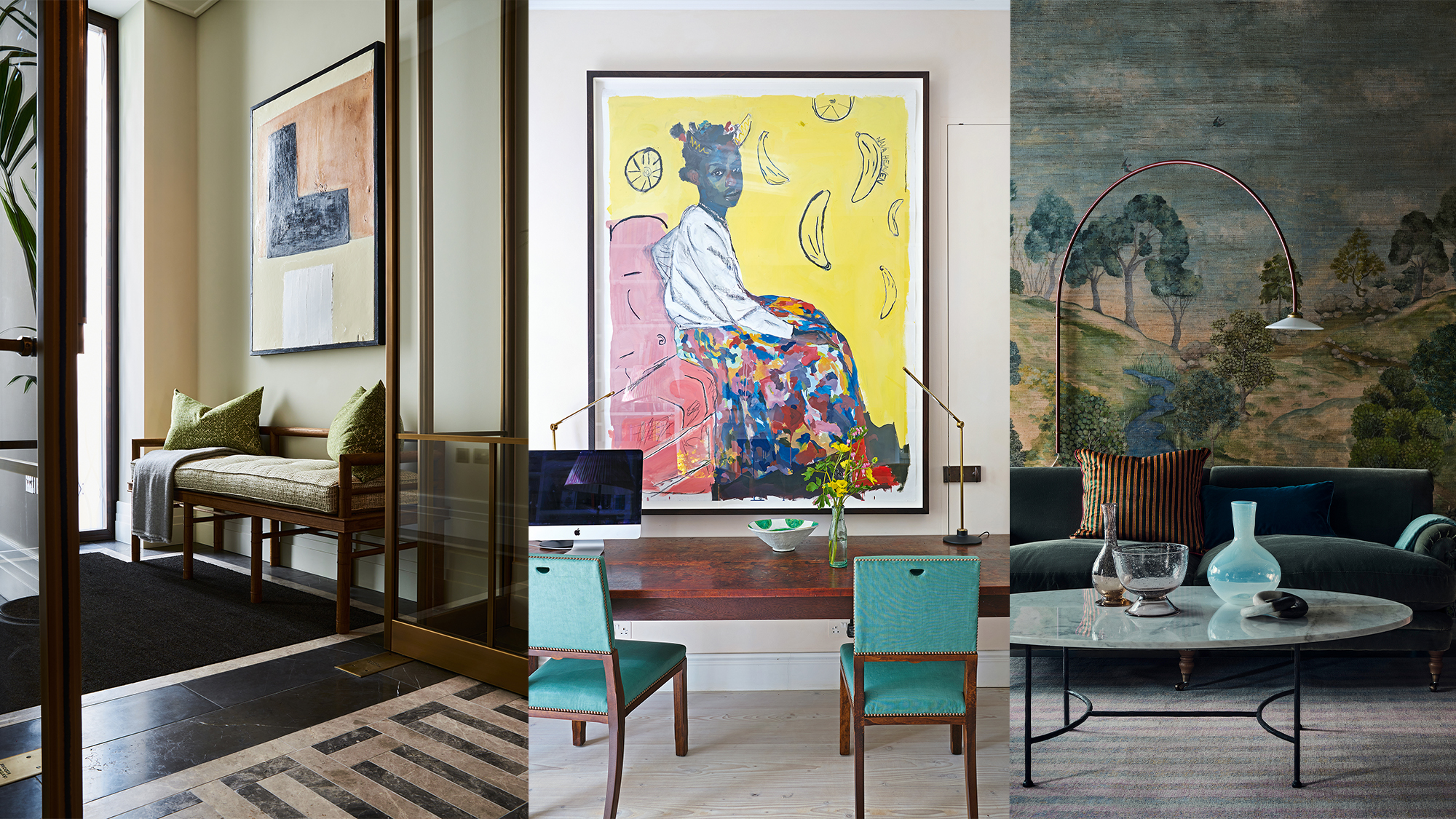Artwork Adds Architectural Personality - The Power Of Art In Shaping Spaces
Art has long been celebrated for its ability to elevate spaces, adding depth, character, and a distinct personality to architecture. From ancient civilizations to modern-day design, artwork adds architectural personality. Artwork has played a pivotal role in shaping the aesthetics and ambiance of interior and exterior spaces.
George EvansNov 30, 202326 Shares26434 Views

Art has long been celebrated for its ability to elevate spaces, adding depth, character, and a distinct personality to architecture. From ancient civilizations to modern-day design, artwork adds architectural personality. Artwork has played a pivotal role in shaping the aesthetics and ambiance of interior and exterior spaces.
One of the fundamental fine arts disciplines, architecture, has long had a close association with the art world. Your property's architectural characteristics reflect your personality and tell a story through the colors and patterns you pick.
For centuries, designers and artists have been captivated by the link between art and architecture. The balance can be difficult to achieve, and the process might be difficult. If you are concerned about that, then this article is here to help you.
In this article, we will explore the profound impact of artwork on architectural design, how artwork adds architectural personality to different spaces, and the various ways in which art can be integrated to create truly inspiring environments.
Infusing Emotion And Storytelling
Artwork has the extraordinary ability to infuse architectural spaces with emotion and storytelling, transforming them from mere structures into captivating environments that resonate with the human experience. Through the use of colors, shapes, forms, and subject matter, art can evoke a wide range of emotions, creating a profound connection between the viewer and the space.
Emotionally engaging artwork in architectural settings can evoke feelings of tranquility, joy, contemplation, or even awe. For instance, a serene landscape painting in a healthcare facility can help reduce stress and anxiety among patients and visitors. On the other hand, a vibrant abstract sculpture in a public plaza can stimulate curiosity and delight, encouraging passersby to pause and interact with the artwork.
Moreover, art has the power to tell stories without words. Whether through representational art that portrays specific narratives or abstract art that invites individual interpretation, art can communicate messages and ideas that transcend language barriers.
In historical buildings, art may depict significant events or cultural symbols, enriching the building's historical context and reinforcing its significance to the community.
Creating A Sense Of Identity
Artwork plays a vital role in creating a sense of identity for architectural spaces, allowing them to express a unique and distinct personality that resonates with their purpose and the communities they serve. This sense of identity is especially critical in cultural, civic, and commercial buildings, where the architecture must reflect the aspirations and values of the people who use and inhabit these spaces.
In cultural institutions, such as museums and galleries, art is not merely a decorative element but a defining characteristic of the institution's identity. Curating a collection that aligns with the institution's mission and values establishes a cohesive and purposeful environment. Visitors can connect with the artwork on display and feel a sense of belonging to a cultural community.
Similarly, in commercial spaces like hotels, restaurants, or offices, artwork can reinforce the brand identity and create a memorable experience for customers and employees. The choice of art in these settings may reflect the company's values, ethos, or the desired ambiance. For example, a tech company may opt for contemporary and innovative art pieces to showcase its forward-thinking approach, while a luxury hotel may display elegant and sophisticated artwork that complements its high-end service.
In public spaces, art becomes an essential element of a city's identity. Sculptures, murals, and other public artinstallations can reflect the local culture, history, and the aspirations of its residents. By celebrating local artists and incorporating their work, cities foster a sense of pride and ownership among the community, creating a shared sense of identity and belonging.
Enhancing Aesthetics And Visual Appeal
Artwork is a powerful tool in enhancing the aesthetics and visual appeal of architectural spaces. By adding color, texture, and visual interest, art elevates the overall design and creates a more engaging and delightful environment. Whether in the form of paintings, sculptures, murals, or installations, art has the ability to turn ordinary spaces into extraordinary ones, capturing the attention and imagination of the viewers.
One of the key ways art enhances aesthetics is by serving as a focal point in a room or a larger architectural setting. A carefully placed artwork draws the eye and becomes the center of attention, anchoring the space and guiding the viewers' gaze. It can create a sense of balance and harmony, especially in open-concept spaces where defining focal points is essential for visual cohesion.
Moreover, art complements the architectural elements and interior design of a space, enriching its overall ambiance. The choice of art can either harmonize with the existing decor or create an intentional contrast, adding depth and intrigue to the setting. For instance, a contemporary art piece in a traditional interior can add a touch of modernity, while classic artwork in a modern space can infuse a sense of timelessness.
Art also plays a crucial role in creating a cohesive and immersive experience for users of the space. In public areas like lobbies, waiting rooms, or corridors, artwork can create a warm and inviting atmosphere, making visitors feel welcome and at ease. The careful selection of art can influence the mood and emotional response of the occupants, contributing to a positive user experience.
Furthermore, artwork can enhance the visual perception of space, particularly in areas with limited natural light or spatial constraints. Large-scale art installations or mirrors strategically placed can create an illusion of spaciousness, making small areas feel more open and airy. On the other hand, art can add intimacy and coziness to large open spaces, breaking them down into more intimate zones.
Transforming Functional Spaces
Artwork has the remarkable ability to transform functional spaces, elevating their purpose and turning them into more meaningful and inspiring environments. Functional areas in architectural design, such as corridors, stairwells, and waiting rooms, often serve utilitarian purposes and may lack visual interest. By integrating art into these spaces, architects can breathe new life into them and enhance their overall usability and aesthetics.
In long and monotonous corridors, art installations can break the monotony and create a more enjoyable journey for users. Artworks along the walls can provide moments of pause and contemplation, making the walk more engaging and pleasant. Illuminated art pieces or interactive installations can turn a simple passage into a captivating experience, especially in public buildings or institutions.
Waiting rooms, whether in hospitals, offices, or public spaces, can become more inviting and comforting with the addition of art. Artwork can serve as a distraction, reducing anxiety and stress among those waiting, and providing a positive distraction during potentially tense moments. In medical facilities, art has been shown to have therapeutic benefits, helping patients and visitors feel more at ease.
Furthermore, art can transform transitional spaces, such as lobbies and entrances, into welcoming and memorable areas. A striking sculpture or a unique art installation in a building's entrance creates a lasting impression on visitors, setting the tone for their entire experience within the space.
Supporting Sustainability And Biophilic Design
Artwork plays a significant role in supporting sustainability and biophilic designprinciples within architectural spaces. Biophilic design seeks to connect occupants with nature and the natural world, fostering a sense of well-being and harmony with the environment. Art inspired by nature, such as botanical prints, landscape paintings, or sculptures inspired by organic forms, contributes to biophilic design by bringing elements of the outdoors inside.
By incorporating natural motifs and patterns in artwork, architects can create a sense of tranquility and rejuvenation within interior spaces. Greenery-themed murals or artwork depicting flowing water can evoke a sense of serenity, while floral patterns and earthy colors infuse spaces with a soothing and organic ambiance.
Moreover, artists often use sustainable materials and eco-friendly practices to create their artworks, aligning with sustainable architectural practices. For instance, sculptures made from recycled materials or paintings using eco-friendly paints contribute to a greener and more environmentally responsible space.
Engaging Public Spaces And Cultural Expression
Public spaces provide a canvas for art to engage communities, celebrate cultural expression, and foster a sense of identity. Art installations in public spaces serve as accessible and inclusive forms of cultural expression, inviting people from diverse backgrounds to connect with the artwork and each other.
Public art has the unique ability to make urban areas more vibrant and inviting. Sculptures, murals, and interactive installations can enliven plazas, parks, and city centers, transforming them into cultural landmarks that resonate with both residents and visitors.
Art can celebrate a city's heritage and history, acting as a visual narrative of its cultural evolution. Murals depicting local traditions, historical events, or iconic figures become part of the city's storytelling, instilling a sense of pride and ownership among the community.
Public spaces are also ideal platforms for community-led art projects and collaborations with local artists. Street art festivals, public art installations, or community workshops not only create engaging and dynamic spaces but also involve residents in the artistic process, promoting a sense of unity and shared cultural expression.
Art in public spaces can serve as a catalyst for social interaction and community engagement. Thought-provoking installations or sculptures that prompt discussion and interaction foster a sense of shared experience among viewers. Public art can also be integrated into public events, festivals, or cultural celebrations, further enhancing the sense of community and belonging.
In diverse and multicultural cities, public art can promote cross-cultural understanding and appreciation. Art that reflects different traditions, languages, and perspectives becomes a representation of the city's diversity, fostering inclusivity and dialogue among its inhabitants.
People Also Ask
How Does Artwork Add Personality To Architectural Spaces?
Artwork adds personality to architectural spaces by infusing emotion and storytelling, creating a sense of identity, enhancing aesthetics, transforming functional areas, and engaging public spaces with cultural expression.
What Is The Impact Of Art On Architectural Design?
Art has a profound impact on architectural design as it elevates spaces, adds depth and character, and creates a distinct personality for buildings and interiors.
How Does Art Contribute To Biophilic Design In Architecture?
Artwork inspired by nature, such as botanical prints or landscape paintings, supports biophilic design principles by connecting occupants with the natural world and promoting well-being.
Why Is Public Art Important In Architectural Spaces?
Public art is important in architectural spaces as it fosters a sense of pride and ownership among residents, enhances cultural expression, and makes urban areas vibrant and inspiring.
How Can Local Artists Be Supported In Architectural Projects?
Local artists can be supported in architectural projects by commissioning original artwork or collaborating with them, which not only bolsters the artistic community but also adds a unique and personalized touch to the space.
Conclusion
Artwork is a powerful tool in architecture, adding personality, emotion, and identity to spaces. From evoking emotions and storytelling to enhancing aesthetics and supporting sustainability, artwork adds architectural personality in myriad ways.
By thoughtfully integrating art into both interior and exterior spaces, architects can create environments that not only inspire and engage but also reflect the values and essence of the communities they serve.
Artwork transcends physical boundaries, connecting people and spaces in a way that goes beyond mere structures, making it an indispensable element in shaping the personality of architectural spaces.
Latest Articles
Popular Articles


